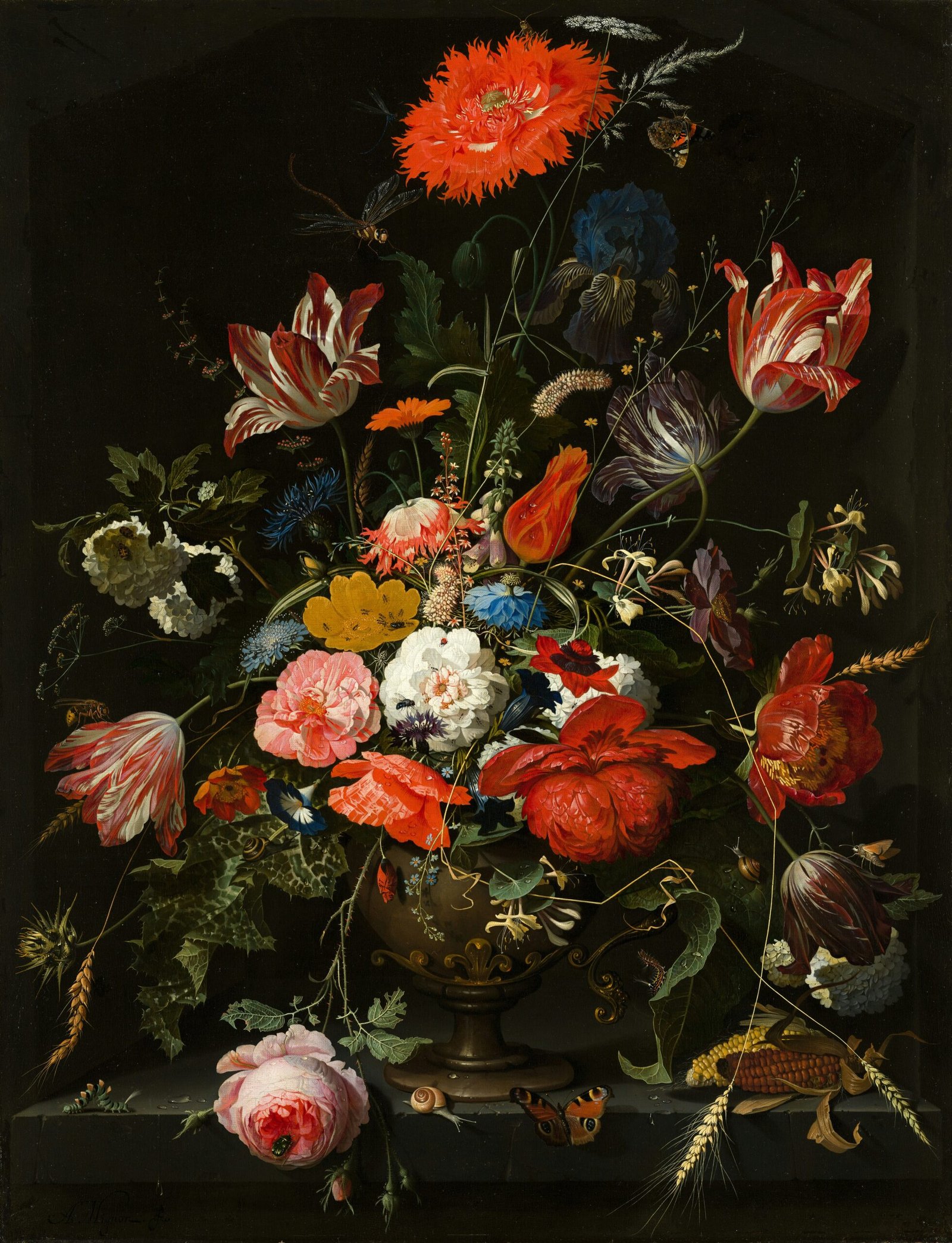 Art has the remarkable ability to transcend language and cultural barriers, allowing individuals from different backgrounds to connect and understand each other on a deeper level. It serves as a universal language that speaks to the core of our humanity, touching our hearts and souls in ways that words alone cannot. Through art, we can explore complex emotions, challenge societal norms, and shed light on important social issues.
Art has the remarkable ability to transcend language and cultural barriers, allowing individuals from different backgrounds to connect and understand each other on a deeper level. It serves as a universal language that speaks to the core of our humanity, touching our hearts and souls in ways that words alone cannot. Through art, we can explore complex emotions, challenge societal norms, and shed light on important social issues.
Moreover, art has the power to inspire and motivate. When we encounter a breathtaking painting, a captivating piece of music, or a thought-provoking film, we are often moved to take action or pursue our own creative endeavors. Art has the ability to ignite a spark within us, encouraging us to think differently, dream bigger, and strive for greatness.
Creativity, as the driving force behind art, is a skill that can be developed and honed through practice and experimentation. It is not limited to the realm of the arts; rather, it permeates every aspect of our lives. Whether we are problem-solving in the workplace, designing a new product, or planning a social event, creativity allows us to approach challenges with fresh perspectives and innovative solutions.
Furthermore, cultivating creativity can lead to personal growth and self-discovery. When we embrace our own unique creative abilities, we tap into a wellspring of potential and unlock new possibilities for ourselves. Creativity encourages us to step outside of our comfort zones, take risks, and embrace failure as a stepping stone towards success. It allows us to express our true selves and find fulfillment in the process of creation.
In conclusion, art and creativity are powerful forces that have the ability to shape our world and transform our lives. They provide us with a means of self-expression, a way to connect with others, and a catalyst for personal growth. By embracing art and nurturing our own creative abilities, we can tap into a wellspring of inspiration and unlock our full potential. So, let us celebrate the power of art and creativity and harness their transformative capabilities to create a brighter and more vibrant world. Art has always played a significant role in reflecting the society in which it is created. It serves as a powerful tool that allows us to delve into different cultures, values, and perspectives. Throughout history, artists have used their work to comment on social and political issues, challenging the status quo and advocating for change. One notable example is Picasso’s Guernica, a masterpiece that depicted the horrors of war and served as a poignant reminder of the devastating consequences of conflict. This painting not only raised awareness but also sparked conversations about the brutality of war and the need for peace.
In addition to raising awareness and promoting dialogue, art also serves as a form of documentation. It captures moments in time, preserving them for future generations to study and learn from. Whether it is a painting, a photograph, or a piece of music, art allows us to revisit the past and gain a deeper understanding of our roots. It provides us with a window into the lives and experiences of those who came before us, shedding light on their struggles, triumphs, and contributions to society.
For example, the Renaissance period is known for its remarkable artistic achievements. The paintings of Leonardo da Vinci, Michelangelo, and Raphael not only showcased the talent and creativity of these artists but also provided invaluable insights into the cultural, social, and political climate of the time. These works of art serve as historical records, helping us to understand the Renaissance period and its impact on the development of Western civilization.
Furthermore, art allows us to appreciate the progress we have made as a society. It serves as a reminder of how far we have come and the challenges we have overcome. For instance, the Harlem Renaissance of the 1920s and 1930s was a cultural and artistic movement that celebrated African American identity and challenged racial stereotypes. Through their art, writers such as Langston Hughes and Zora Neale Hurston highlighted the experiences and struggles of African Americans, contributing to a greater understanding and appreciation of their culture.
In conclusion, art is indeed a mirror of society. It reflects our values, challenges our beliefs, and documents the moments that shape our collective history. From raising awareness and sparking conversations to preserving our past and celebrating our progress, art has the power to inspire, educate, and unite us. It is through art that we can truly understand and appreciate the diverse and complex world in which we live.
Once artists have gathered inspiration, they begin the process of translating their ideas into tangible works of art. This involves brainstorming, sketching, and planning. Artists may create rough drafts or prototypes to test their ideas and make adjustments as needed.
Once the initial planning stage is complete, artists move on to the execution phase. This is where their technical skills come into play. They carefully choose the materials and tools that will best bring their vision to life. Whether it’s a paintbrush, a chisel, or a camera, artists use their chosen medium to meticulously create each detail of their artwork.
Throughout the creative process, artists also rely on their intuition and instinct. They make decisions based on what feels right, even if it goes against conventional wisdom. This ability to trust their own judgment is what sets artists apart and allows them to create truly unique and original works of art.
Finally, the creative process is not complete until the artist steps back and evaluates their work. They critically analyze each element of their artwork, considering its composition, color palette, and overall impact. This self-reflection allows artists to refine their work further and make any necessary adjustments.
In conclusion, the creative process is a multifaceted journey that requires a combination of imagination, skill, and hard work. It involves embracing failure, seeking inspiration, planning, executing, and evaluating. Artists dedicate themselves to this process, constantly pushing the boundaries of their creativity and striving to create something meaningful and impactful.
Art therapy has gained recognition and popularity in recent years due to its ability to tap into the therapeutic power of art. By using various art forms such as painting, drawing, and sculpting, individuals can engage in a creative process that goes beyond words. This form of therapy can be particularly effective for those who struggle with verbal expression, as it provides an alternative means of communication.
One of the key benefits of art therapy is its ability to help individuals explore and process their emotions. Through the act of creating art, individuals can externalize their thoughts and feelings, giving them a tangible form. This can be especially valuable for individuals who have experienced trauma or are dealing with complex emotions that may be difficult to put into words. By visually representing their experiences, individuals can gain insight into their emotions and develop a deeper understanding of themselves.
Art therapy also provides a safe and non-judgmental space for individuals to express themselves. Unlike traditional therapy settings, where individuals may feel pressured to find the right words or worry about being judged, art therapy allows for free expression. There are no right or wrong answers in art therapy, and individuals are encouraged to explore their creativity without fear of criticism. This freedom can be liberating and empowering, allowing individuals to tap into their innermost thoughts and emotions.
In addition to its emotional benefits, engaging in art can also have a calming and meditative effect. The act of creating art requires focus and concentration, which can help individuals enter a state of flow. This state of flow, often described as being fully immersed in an activity, can promote mindfulness and reduce stress. As individuals engage in the creative process, they become fully present in the moment, letting go of worries and distractions. This can be particularly beneficial for individuals who struggle with anxiety or find it difficult to relax.
Overall, the therapeutic power of art is undeniable. Whether it’s through art therapy or simply engaging in creative activities, art can provide a valuable outlet for self-expression, emotional processing, and relaxation. It allows individuals to tap into their inner creativity and connect with themselves on a deeper level. Whether someone is an experienced artist or a novice, the act of creating art can be a transformative and healing experience.
Art and Innovation
Art and creativity play a crucial role in driving innovation. Many groundbreaking inventions and scientific discoveries have been the result of creative thinking. Artists and scientists share a common trait – the ability to think outside the box, to question the status quo, and to imagine new possibilities.
Art can inspire scientists and engineers to approach problems from a different perspective. It can spark new ideas, challenge assumptions, and push the boundaries of what is possible. The intersection of art and technology has led to innovations in fields such as virtual reality, animation, and interactive design.
Furthermore, art can also enhance the user experience of products and services. The design of a smartphone, the packaging of a product, or the layout of a website – all of these involve elements of art and creativity. Aesthetics and functionality go hand in hand, and companies that prioritize design and user experience often stand out from the competition.
One area where art and innovation have particularly intersected is in the field of medical technology. Artists and designers have collaborated with scientists and doctors to create innovative medical devices and prosthetics that not only function effectively but also consider the emotional and psychological well-being of the patients. For example, 3D printing technology has been used to create custom-made prosthetic limbs that are not only functional but also aesthetically pleasing, making the wearer feel more confident and empowered.
Art has also played a significant role in the development of sustainable technologies. Artists have used their creativity to raise awareness about environmental issues and inspire innovative solutions. For instance, sculptures and installations made from recycled materials serve as powerful reminders of the importance of recycling and reducing waste. These artistic expressions not only convey a message but also challenge viewers to think about their own impact on the environment and consider alternative ways of living.
Moreover, art has the ability to humanize technology. In an increasingly digital world, where interactions are often mediated through screens, art can bring a sense of humanity and emotional connection. Whether it’s through interactive installations, immersive experiences, or expressive performances, art has the power to evoke emotions and engage the senses in ways that technology alone cannot. This human element is essential in shaping the future of innovation, as it reminds us of the importance of empathy, compassion, and understanding.
